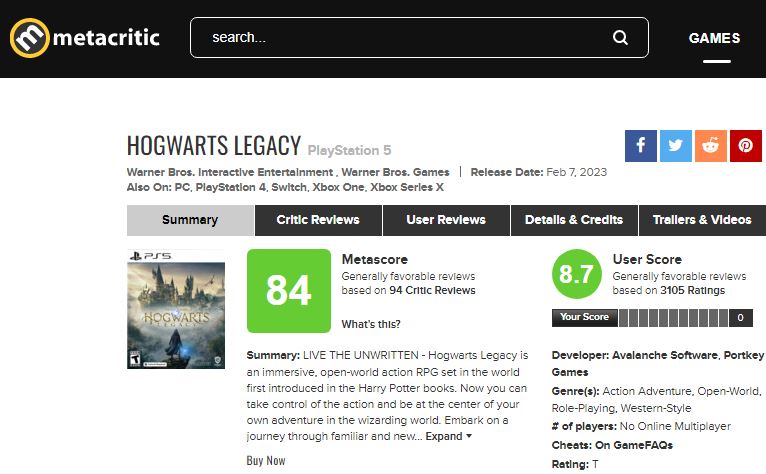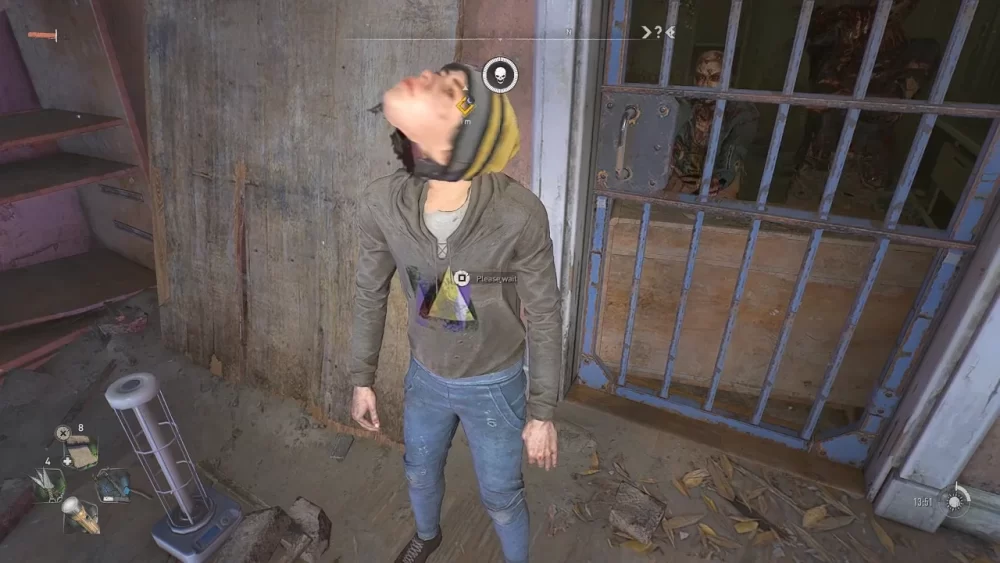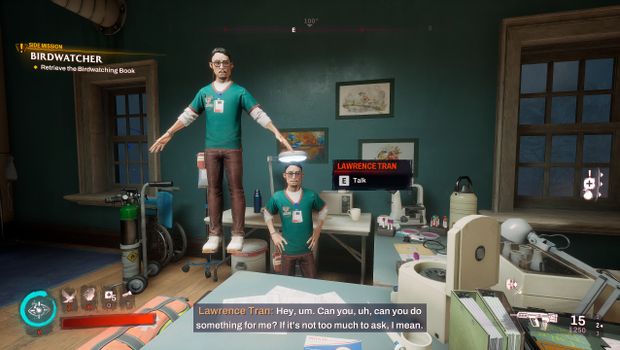The most disappointing response to something new and scary is “better get used to it, it’s here to stay.” We’re currently saying it for artificial intelligence, and we’ve already said it with streaming, NFTs, the rising costs of online services, and the release of unfinished and broken triple-A games.
That kind of defeatist attitude limits the people’s opportunity to affect change with their power as consumers. It normalizes practices by businesses that disregard customer satisfaction when selling entertainment.
This has been a hot button issue as of late in the wake of several high-profile video games released in unfinished states, or at least severely marred by game-breaking bugs and a general lack of polish. It’s made it more difficult to tolerate the recent price increase of many AAA games to $70.

Game reviews play a bigger role in this new normal for gaming. Despite the growing influence of user reviews in sites such as Metacrtitic and Steam or community reviews and commentary in forums such as Reddit, Discord, and Twitch, a review from a trusted gaming site can still impact sales.
That’s why their normalization of game bugs and performance issues is such a problem. Over the past few generations (most notably from the PS3/Xbox 360 onward, but with things getting demonstrably worse in the current console generation), a lot of triple-A video games have received good reviews despite being launched in unfinished states or buried in bugs and glitches.
It’s not uncommon to see reviews conclude that a game is great but that readers should wait till all the wrinkles get ironed out with patches to fully enjoy it (and that’s after the Day 1 patch). The game’s eventual quality takes precedence over what it gamers actually get on release day.
9’s out of 10, 8’s out of 10, and 95% approval ratings are regularly awarded in these cases, accompanied by a salvo of articles about the game’s secrets, tips, lore, and mechanics. The latest games to have enjoyed this kind of treatment include but are not limited to Star Wars Jedi: Survivor, The Last of Us PC port, Dying Light 2, Atomic Heart, and Sony’s Spider-Man PC port.

This practice does not fairly address gamer concerns, nor does it look out for them. It’s a disservice to the community and goes against what reviews are supposed to do: make recommendations based on the quality of an experience.
Change is possible, though. Reviews can be steered in a direction that helps curb the problem of poor game releases that treat gamers as unofficial beta testers. Don’t forget, while the game can get better over time, those who pre-order it or buy it on release day (the people that make a game a best-seller) are the ones who get the worst version of it. They pave the way for those who hold out on day 1 purchases hoping for a smoother gaming experience later down the line.
To this effect, here are a few observations and suggestions that can help in establishing a new review culture that better reflects the struggles of the modern gamer.

- Accompany review scores with a performance score that encapsulates how well a game runs.
Before the rise of digital stores, first day patches, and constant online connectivity, games were released in essentially their final form. Any glitches or game-breaking bugs that weren’t purged beforehand remained as part of the experience in perpetuity.
Here’s a quick example. Gamers who willingly opened their wallets to buy The Matrix: Path of Neo back in 2005, found that the game’s framerate would make certain sequences almost unplayable, especially on Xbox. Unresponsive controls, random crashes, and corrupted animations that often required restarting the game all converged to earn the game mixed reviews that acknowledged that the game could have been good if it ran optimally.
In other words, the performance affected the scores (though some were still favorable, glitches notwithstanding, showing the review problem has deeper roots). It was too difficult to separate the game from its glitches because there was no fixing them. In those days the scores, more often than not, reflected the entire package. Thus, glitches and bugs exacted a heavier toll on reviews.
Today, we’ve effectively separated game and glitch. A strong narrative with great gameplay can bypass the negative because, eventually, the game will run better. This was the case with Star Wars Jedi: Survivor, which received top scores even as its performance woes detracted from its enjoyment.
So, if we’ve managed to achieve this separation, let’s give out two scores: one for the game itself and one for its performance. This can help gamers gauge whether to suffer the incomplete and unstable performance issues of a particular game or to wait them out until they’ve been cast out.
The inclusion of the performance score, so long as it’s given considerable weight in the review, might slow down publishers that want to rush to market even knowing there’s still a lot of work to be done. Furthermore, it can give readers a clearer idea of what’s in store for them if they buy the game in its early stages. Not everyone has the time to watch the valuable Digital Foundry tech videos before deciding on a buy, nor to check out upwards a dozen review videos to make a final judgement.
That said, in-depth discussions on performance are taking place in social media and user-review spaces. Their existence is indicative of community-wide worries over these releases. Trusted gaming site reviews would be wise to address these concerns, given the influence they carry. You can highlight a game’s strengths or its greatness while recognizing that playing it in an unfinished state takes a community’s support for granted and is ultimately a disingenuous gesture towards it.

- Either delay reviews for broken games or delay review scores until games are fixed.
One of the most frustrating aspects of a good review for a broken or incomplete game is that it kind of feels like a source of excitement for something that’s yet to come. No matter how good a game is, my appreciation of its design won’t necessarily match that of the reviewer if my character gets stuck doing a T-pose during a pivotal story moment.
Reviews for the Xbox Series X exclusive Redfall, for example, have noted instances in which important battles glitch out and make boss enemies disappear completely, to the point story sequences activate halfway through in nonsensical ways. This game received mostly bad reviews, but the deciding factors were mostly relegated to undercooked gameplay decisions and lackluster design rather than glitches. The game’s performance was definitely discussed here more than in other recent reviews, perhaps due to the proximity of its release to that of Star Wars Jedi: Survivor.
If the interest of the review falls on showcasing the game’s experience once it stops malfunctioning, then don’t review the game when it’s at its worst. Let publishers and developers know that their games won’t be given much consideration if they are released in unacceptable conditions. In fact, delaying the final score until the game’s problems have been fixed can do some good in helping balance the review problem. It’s a tough pill to swallow economically, but it can signal a site’s intention to look out for players and their wallets.
Another possible fix can be offering pending reviews or reviews in progress that stay “in progress” until the game’s been all cleaned up. It signals the site’s dedication to keeping gamers informed and not taken advantage of.

- Consider that asking players to play an unfinished game is almost the same as delaying a game.
In the realm of speculation, the reasons why a game is released in such dire a state often gravitate towards a publisher’s desire not to further delay their game. The demands of the market, the need to stay relevant, the bad reputation that comes with multiple delays and rumors of development problems can explain this to an extent. The decision to hold a product back more than once might be met with disappointment and ridicule, but the opposite lands publishers in extensive patch territory.
Given the amount of work that goes into putting together patches and fixes, some of which create problems of their own, it’s not difficult to argue that the whole process of getting a game in shape almost amounts to delaying the game in real time. Gamers might be able to play the game, sure, but they still have to wait to engage with it as it was originally intended.
This can be seen as a living delay, the equivalent of driving a car that’s simultaneously getting essential or missing parts installed every other mile. This condition should be reflected in the review and how a game is scored. A lot of video game consumers go only by game scores to justify purchases. It’s why Metacritic scores are so precious to publishers and developers.

Reviews that reward these games with favorable scores basically accept the product’s condition and represent a green light for purchase to certain readers. It’s not that reviews gloss over performance issues or neglect them altogether. It’s that they don’t drive the point home regarding what gamers are getting if they buy the game during its launch window.
If it isn’t obvious by now, my answer to the question posed by this article is a resounding no. Broken games should not get reviews that assume that they’ll eventually run optimally. Gaming sites would do well by readers if they changed their approach to reviews to make performance carry more influence on final scores. Not doing this erodes trust and fosters a cynical and hostile environment that makes it hard to enjoy the fictional places we want to become immersed in.







